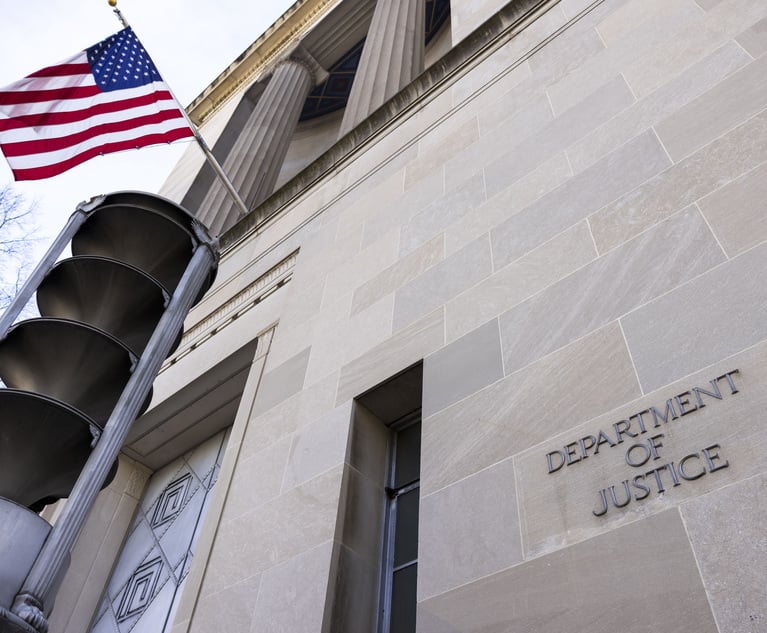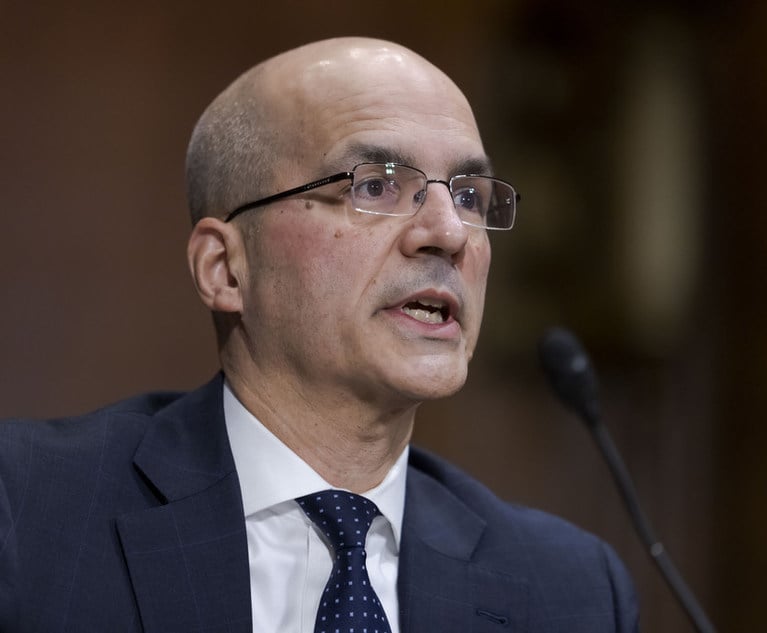 Photo: Sittinan via Adobe Stock
Photo: Sittinan via Adobe Stock White-Collar Crime
In this Special Report: "Prosecutors' New Weapon in Cross-Border Investigations," "When the Paper Tiger Bites: The Myriad Dangers of Ineffective Compliance Programs," "Should the United States Be the Global Financial Policeman? International Extradition of White-Collar Defendants," "A Decade After the Milberg Weiss Scandal: Does History Repeat Itself?" and "The CTA Paradigm Shift: Why Practitioners, Industry and Law Enforcement Should Care."
March 29, 2021 at 12:21 PM
2 minute read
The Anti-Money Laundering Act of 2020, which became law on Jan. 1, 2021, greatly expands the U.S. government's authority to subpoena records from foreign banks with no U.S. branches, and this expansion has the potential to dramatically impact future white-collar investigations. This article provides insight into how the recent legislation could affect cross-border, white-collar investigations, how foreign banks can (or should) respond if they receive these subpoenas, and what affirmative measures foreign banks can take to prevent coming under scrutiny themselves.
Corporations need to take a close look at their compliance programs, making sure that these programs are delivering, not just promising, real oversight.
The United States needs to consider carefully whether its treaty advantages and broad jurisdictional statutes should be aggressively used to bring foreign defendants to the United States when the American interest is limited and when other countries may have a greater interest in applying their own statutes, and their own penalty structures.
The CTA constitutes the most significant change to the U.S. anti-money laundering regime since the USA PATRIOT Act of 2001, and legal practitioners, industry, and law enforcement should pay careful attention to its rollout, which will primarily be addressed in regulations to be promulgated by the U.S. Department of Treasury.
With the government again focusing on the behavior of the plaintiffs' bar, its scrutiny could signal the emergence of a new prosecutorial priority with which plaintiffs' firms, and the legal profession, will have to contend.
NOT FOR REPRINT
© 2025 ALM Global, LLC, All Rights Reserved. Request academic re-use from www.copyright.com. All other uses, submit a request to [email protected]. For more information visit Asset & Logo Licensing.
You Might Like
View All
'A Shock to the System’: Some Government Attorneys Are Forced Out, While Others Weigh Job Options
7 minute read
'Serious Legal Errors'?: Rival League May Appeal Following Dismissal of Soccer Antitrust Case
6 minute read
How Some Elite Law Firms Are Growing Equity Partner Ranks Faster Than Others
4 minute read
Law Firms Mentioned
Trending Stories
- 1'Shame on Us': Lawyer Hits Hard After Judge's Suicide
- 2Upholding the Integrity of the Rule of Law Amid Trump 2.0
- 3Connecticut Movers: New Laterals, Expanding Teams
- 4Eliminating Judicial Exceptions: The Promise of the Patent Eligibility Restoration Act
- 5AI in Legal: Disruptive Potential and Practical Realities
Who Got The Work
J. Brugh Lower of Gibbons has entered an appearance for industrial equipment supplier Devco Corporation in a pending trademark infringement lawsuit. The suit, accusing the defendant of selling knock-off Graco products, was filed Dec. 18 in New Jersey District Court by Rivkin Radler on behalf of Graco Inc. and Graco Minnesota. The case, assigned to U.S. District Judge Zahid N. Quraishi, is 3:24-cv-11294, Graco Inc. et al v. Devco Corporation.
Who Got The Work
Rebecca Maller-Stein and Kent A. Yalowitz of Arnold & Porter Kaye Scholer have entered their appearances for Hanaco Venture Capital and its executives, Lior Prosor and David Frankel, in a pending securities lawsuit. The action, filed on Dec. 24 in New York Southern District Court by Zell, Aron & Co. on behalf of Goldeneye Advisors, accuses the defendants of negligently and fraudulently managing the plaintiff's $1 million investment. The case, assigned to U.S. District Judge Vernon S. Broderick, is 1:24-cv-09918, Goldeneye Advisors, LLC v. Hanaco Venture Capital, Ltd. et al.
Who Got The Work
Attorneys from A&O Shearman has stepped in as defense counsel for Toronto-Dominion Bank and other defendants in a pending securities class action. The suit, filed Dec. 11 in New York Southern District Court by Bleichmar Fonti & Auld, accuses the defendants of concealing the bank's 'pervasive' deficiencies in regards to its compliance with the Bank Secrecy Act and the quality of its anti-money laundering controls. The case, assigned to U.S. District Judge Arun Subramanian, is 1:24-cv-09445, Gonzalez v. The Toronto-Dominion Bank et al.
Who Got The Work
Crown Castle International, a Pennsylvania company providing shared communications infrastructure, has turned to Luke D. Wolf of Gordon Rees Scully Mansukhani to fend off a pending breach-of-contract lawsuit. The court action, filed Nov. 25 in Michigan Eastern District Court by Hooper Hathaway PC on behalf of The Town Residences LLC, accuses Crown Castle of failing to transfer approximately $30,000 in utility payments from T-Mobile in breach of a roof-top lease and assignment agreement. The case, assigned to U.S. District Judge Susan K. Declercq, is 2:24-cv-13131, The Town Residences LLC v. T-Mobile US, Inc. et al.
Who Got The Work
Wilfred P. Coronato and Daniel M. Schwartz of McCarter & English have stepped in as defense counsel to Electrolux Home Products Inc. in a pending product liability lawsuit. The court action, filed Nov. 26 in New York Eastern District Court by Poulos Lopiccolo PC and Nagel Rice LLP on behalf of David Stern, alleges that the defendant's refrigerators’ drawers and shelving repeatedly break and fall apart within months after purchase. The case, assigned to U.S. District Judge Joan M. Azrack, is 2:24-cv-08204, Stern v. Electrolux Home Products, Inc.
Featured Firms
Law Offices of Gary Martin Hays & Associates, P.C.
(470) 294-1674
Law Offices of Mark E. Salomone
(857) 444-6468
Smith & Hassler
(713) 739-1250






